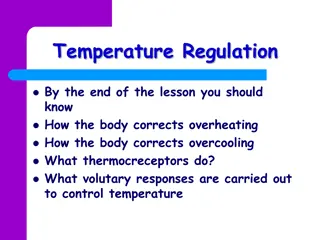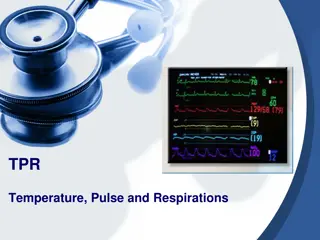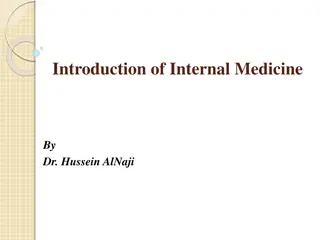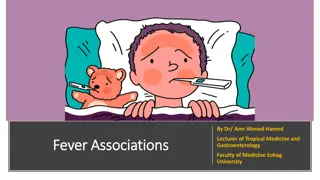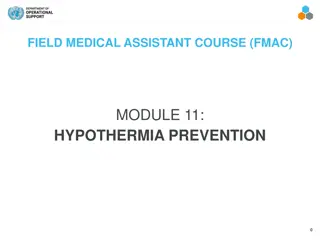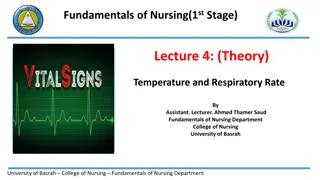Understanding Fever and Hypothermia: Body Temperature Regulation
Body temperature is the balance between heat production and heat loss, crucial for maintaining health. Fever and hypothermia are conditions where body temperature is elevated or decreased respectively. Factors like age, exercise, hormonal levels, stress, and environment can affect body temperature. Managing fever and hyperthermia involves providing adequate nutrition, fluids, and heat regulation techniques.
Download Presentation

Please find below an Image/Link to download the presentation.
The content on the website is provided AS IS for your information and personal use only. It may not be sold, licensed, or shared on other websites without obtaining consent from the author. Download presentation by click this link. If you encounter any issues during the download, it is possible that the publisher has removed the file from their server.
E N D
Presentation Transcript
Fever and hypothermia By- Dr Aamena Zaidi Assistant Professor School of Health Sciences CSJMU
Definition: Body temperature is degree of hotness and coldness of body It is somatic sensation of heat and cold.it is the degree or intensity of heat of body in relation to e ternal environment. The body temperature is the difference between the amount of heat produced by the body processess and the amount of heat lost to the environment.
Temperature Regulation Body temprature = thermogenesis-Heat loss
Types of Temperature: Core temperature: it is the temperature of internal body tissues below the skin and subcutaneous tissues. The sites of measurement are rectum, tympanic membrane, esophagus, pulmonary artery and urinary bladder.
Types of Temperature Surface body temperature it refers to the body temperature of external body tissues at the surface that is of the skin and subcutaneous tissues.
Factors Affecting Bodytemperature Age Exercise Hormonal level Stress Circardian rhythm Environment
Signs and Symptoms of fever: Increased heart rate , respiratory rate and depth. Shivering Cyanotic nail beds
Management of Fever and Hyperthermia: Provide adequate nutrition and fluids to meet the increased metabolic demands and prevent dehydration Reduce physical activity to limit heat production especially during the flush stage. Provide a tepid sponge bath to increase Heat loss through conduction. Provide dry clothing and bed linens.
Management of Fever and hyperthermia: Remove excess blankets when the patient feels warm, but provide extra warmth when the patient feels chilled. Administer antibiotics ax ordered.






